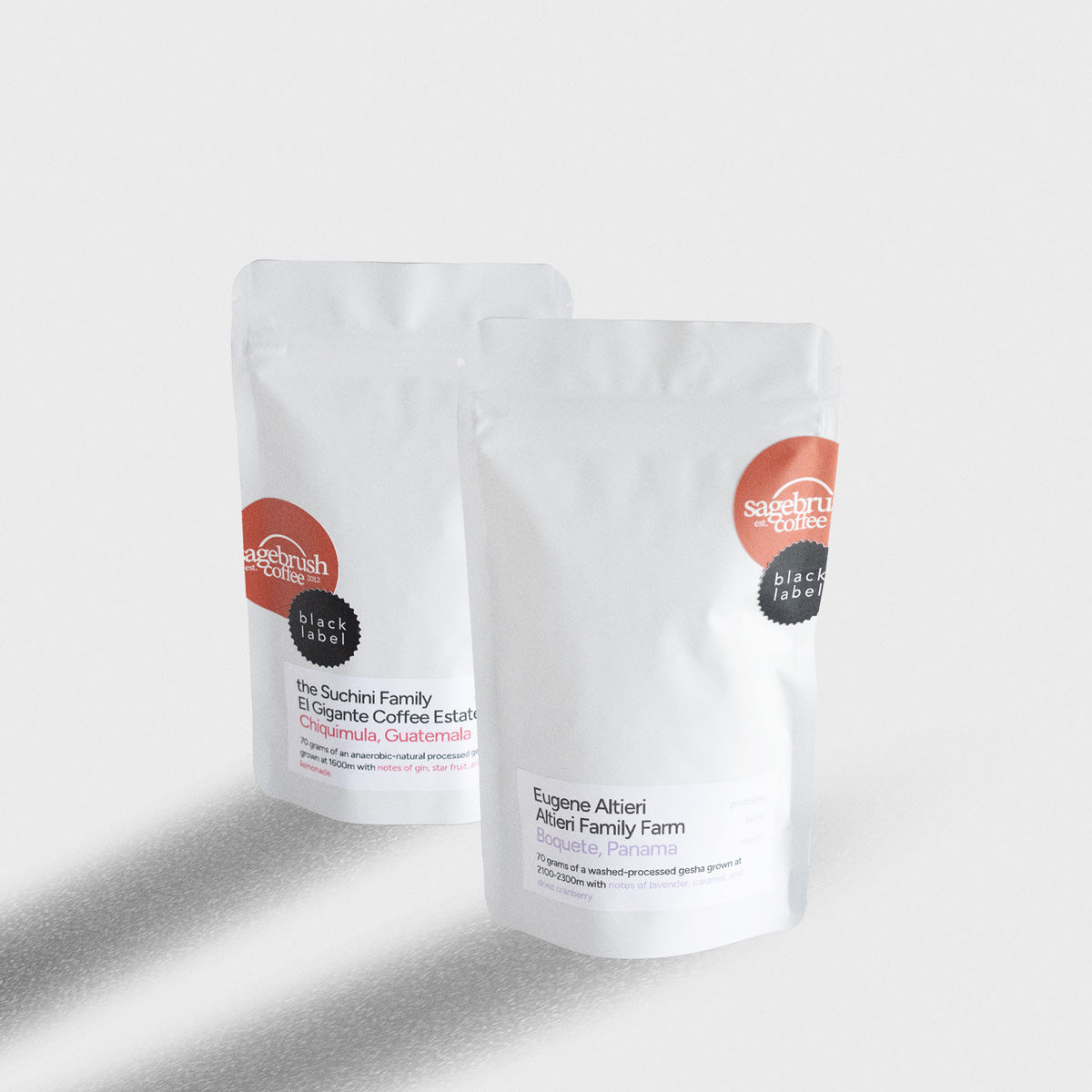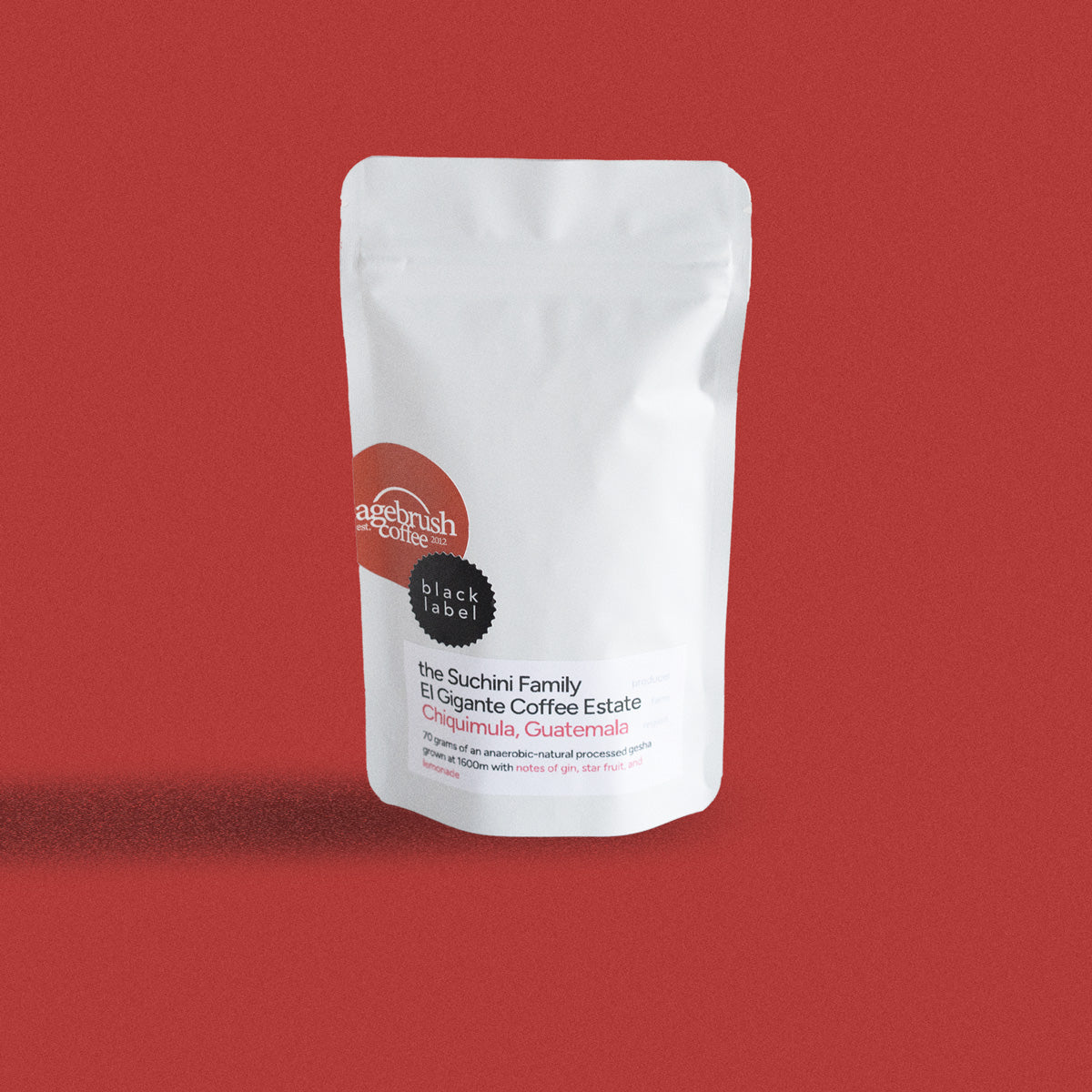In the 12 years I've owned a coffee roasting business, the most common question we have received is, "What coffee should I buy to use for espresso?" I can answer that question in 10 seconds, but it really deserves a 10-minute explanation.
When a customer comes into Sagebrush Coffee and asks a barista what coffee they should use for their espresso at home, we almost always recommend a chocolatey and rich coffee. We do this for many different reasons. But the reality is this is the most common way people expect their espresso to taste. I personally believe you can use any coffee for espresso. Let's discuss why.
Why are you able to use any coffee for espresso, and why is "chocolatey and rich" the usual recommendation? The answer must start with a short lesson in extraction. The beginning of that lesson requires that we define a couple of terms for you. There's a term commonly used in the coffee industry: TDS, or Total Dissolved Solids, measured as a percentage of the coffee solids that are in the water you're drinking. A higher number generally means a higher concentration of coffee. We all have brewed recipes to optimize flavor. That's why, when I get a new brewing machine, I always Google what's the recommended brewing method. What I'm really trying to do is figure out how to achieve the optimal TDS for the brewing method I'm using or at least a baseline I can tweak to my palate's preference.
There's also a term similar to TDS but it's just the dissolvable solids—a finite number representing what you will extract from the coffee. This term isn't used as much, but it's helpful when thinking about extraction, especially for espresso. When you look at the extraction, you're extracting the same amount of dissolvable solids from your shot of espresso as you would from a similar brew recipe for a pour-over, but you're putting those dissolvable solids in two ounces of water versus eight or ten ounces of water, and so your TDS varies.
What does this variation do to the flavor of the coffee? It changes the boldness, the mouthfeel, and the body, but it doesn't change the flavor. If you're brewing your espresso correctly, and you're brewing your pour-over correctly, the flavor notes should be the same. However, if you're brewing your espresso, you're going to have a very different experience with your coffee. Think about this: when you're having a shot of espresso, many of us love shots of espressos, and there's probably a larger number of people that love Americanos. Well, an Americano tastes very different than a shot of espresso, and the reason for that is you have a much lower concentration of coffee, lower concentration of dissolvable solids in that same cup, but your extraction was exactly the same. It's not like you're brewing or pulling a shot for an Americano differently than what you're doing for an espresso.
So you see that even more exaggerated when you talk about pour-overs. A good comparison, although not a perfect analogy, is a chocolate cake versus chocolate ice cream. They both taste like chocolate, but they have a very different density and mouthfeel. Like I said, that's not a perfect analogy, but it helps to understand the difference we're trying to highlight.
If you've experienced lots of different brewing methods, this should resonate with you as you think through what a French press tastes like, versus a shot of espresso, versus a V60 or a Chemex or even a cold brew. I often use terms like "it's juicier" versus "it's thicker," as there's just something that the coffee does on your tongue that affects the way that you perceive it.
Why do you think we add milk to espresso so much more, or why is so much more milk used in espresso than in normally brewed cups of coffee, whether it's on a drip machine or a pour-over? The reason is that concentration creates a density that some people don't love, and so adding milk creates the mouthfeel that most people would probably prefer. And so, if we're looking at our sales at the coffee bar, we probably sell 30 lattes to one shot of espresso because people love the mouthfeel and the texture of a good steamed milk poured into a highly concentrated shot of espresso. And that's just what excites most people.
So as you think about scenario, then what complements the milk really well? It's probably going to be a chocolatey and rich coffee and that's why we recommend it most of the time.
However what my next question typically is, as you're starting to think through what you want when you're buying espresso, "How do you drink it?" Do you prefer it in a shot, really concentrated? Do you prefer it diluted in an Americano? Would you rather it as a latte that you're steaming the milk on? Would you rather an iced latte? All of those will impact what you're looking for in terms of your flavor, and even as you're having a shot, do you like just a shot of espresso that you drink really quickly, or are you more of an espresso sipper that you have with carbonated water? That's going to affect what you're looking for in the coffee.
So think through, what do you love? We talk about chocolatey and rich because that's what most people are looking for when it comes to an espresso. But the reality is, what do you like the most when you drink coffee? If you drink drip coffee, where do you gravitate to? If you order a pour-over at a coffee shop or make it at home, what do you gravitate to? Do you like the more delicate, balanced coffees? Do you like the more dynamic flavor profiles? Do you like to have a fruitier coffee? Do you like a chocolatey coffee? What do you gravitate to, and then order that and put that on espresso, especially if you're trying to brew a shot or an Americano, just get what you love.
Our barista's favorite coffees in the shop are usually the more fruity ones on espresso. They just have this amazing mouthfeel. So try to find what you love and brew it.
Now, one part of this conversation we haven't talked about is actually the roast level, most people just assume a dark roast is what you want on espresso, and that isn't always the case either. The different roast levels are going to impact the density of the coffee bean. The more you roast it, the lower the density of the coffee bean, the less you roast it, the more water is in that coffee bean. And it ends up being a more dense coffee. And so that's going to affect how you extract the coffee from it. Kathryn did a great job for us putting together a video where she explains how to dial in a light roast coffee. It won't line up with your muscle memory, so you need to learn how to be able to grind it to the right level to get the extraction to maximize the flavors you want out of it. And honestly, most of the fruitier coffees, the more delicate coffees, are going to be roasted light. So you might say, "Oh, man, I've tried a light roast coffee, or I've tried a fruity coffee and espresso, and it just comes out sour. It just comes out bitter." And that's probably because you haven't dialed in that roast, not because that coffee doesn't work well as espresso. So that's my encouragement to you, is probably go watch the video if you'd like those coffees, learn how to dial it in. It's going to take some time, and even every bag may take a shot or two extra to be able to get it the way you like it. And then you're going to make some of the best espresso you've ever had in your life. And that's what you're going for. And that's really the whole point to this. Start with chocolatey and smooth coffees or chocolatey and rich coffees. Those are where people gravitate to get that down right, and then expand as your flavor palate expands and hit what you really love and pick those out. Don't feel like you're siloed into a certain coffee makes espresso. What you should say is the coffee I love makes a great espresso.
Well, hopefully that answers the question that most of our customers are asking, or many customers ask. Hopefully that puts you down the right path, if not, email us, reach out to us. We'd love to expand on it. We love talking about coffee, and in a coffee bar, sometimes you just don't have time to have the conversations we love talking about so reach out to us, and we'd love to talk more about this, or follow us on YouTube.

















